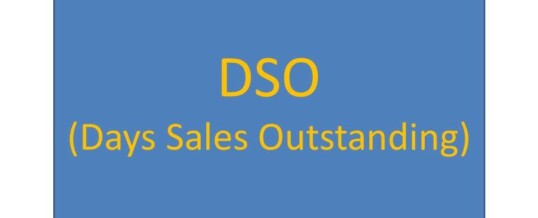
DSO
DSO stands for Days Sales Outstanding.
This article discusses this important ratio (or metric) and what it means to your business.
What Is DSO?
DSO represents the average number of days it takes for you to collect or realize sales revenue.
Example 1: Cash Sale
Let’s say, for example, you sell a widget for cash. And the person pays you right away. Your DSO will be zero. You collected your sale real time.
Example 2: Credit Sale
Let’s say a potential customer contacts you to buy a truckload of bricks for $10,000. And, let’s say the customer requests terms of “net 60.”
So, you go ahead and make the sale. And, finally, on day 65, you finally get paid. In this case, your DSO is 65 days.
Example 3: The Real World
Most companies experience a mixed bag of cash and credit sales. Some customers pay timely, but others not so much. In this case, you will need a formula to calculate your realized DSO.
Why Calculate DSO?
Days Sales Outstanding is an important metric when it comes to the performance of your business. In essence, a sale is only a sale – unless and until – you collect on it.
Accounts Receivable, or A/R, is basically a sign of inefficiency. In a perfect world, you and your organization would have zero A/R. But, depending upon the industry, selling or transacting on credit is normal.
But, suffice it to say, like in golf, the lower your A/R (and the lower your DSO), the better you are.
God willing, managing and improving DSO is key if you want to scale your organization.
How Do You Calculate DSO?
Here’s the formula:
(Accounts Receivable / Total Revenue) X Total Days of Sales in Total Revenue
Let’s say that as of December 31, 20XX, the Accounts Receivable (e.g., A/R) is $100,000. And, let’s also say that the total revenue for the 12 months, which ended December 31, 20XX, is $1.2 million.
Here’s the calculation for this scenario:
$100,000 / $1.2 million X 365 = 30.41 Days Sales Outstanding
DSO Trending
If you are just starting a business, your DSO will be based on your short history.
Month 1
Let’s say, at the end of your first month of operation (e.g., January) you have $50,000 in A/R, and let’s say that the total revenue for the month was $100,000.
$50,000 / $100,000 x 31 days = 15.5 Days Sales Outstanding
Month 2
Let’s say that at the end of your second month (e.g., February), you have $75,000 in A/R, and suppose the total revenue for the two months is $200,000 (e.g., $100,000 for January and $100,000 for February).
If you calculate DSO just for the month of February, then it looks like this:
$75,000 / $100,000 x 28 days = 21 Days Sales Outstanding
But, if you calculate the DSO from inception to date, then it looks like this:
$75,000 / $200,000 x (31 days + 28 days) = 22.1 Days Sales Outstanding
Tips And Tricks
At Blue Elevator™, we recommend using twelve month rolling (and trailing) average.
Why? This will help you get a true picture of how your DSO is trending.
- Accounts Receivable, or A/R, is the account balance at the end of each respective month end. This is a balance sheet account. You will use whatever number exists in this account at the end of each respective month.
- For total revenue, we recommend that you use a “rolling” 12 months. For example, let’s say you are calculating your ratio at the end of January 31, 20X2. In practice, you would take the total revenue for the 12 months ending December 31, 20X1. You would add in the revenue for January 20X2. And, you would subtract out the revenue for January 20X1.
- Additionally, for the Days, you will be using 365 (days) since the revenue covers 365 days.
Trending
In keeping with the twelve-month rolling and trailing calculation, we recommend that you calculate it each and every month using the above formula.
Since you are always using the most recent month-end A/R and a twelve-month revenue total, you will do well to evaluate the trending of each month’s metric.
Is your DSO trending up? If so, you are losing ground. If it’s going down, you are improving.
Summary
Days Sales Outstanding is an important metric. It’s a vital indicator as to how things are trending in your organization.
Contact us if we can be of any encouragement to you.
MAR

About the Author:
Ken Moll is the Principal and Founder of Blue Elevator®. With professional experience spanning four decades, Ken has a breadth of foundational business knowledge rarely found – making him part of an elite class of professionals. Ken's passion is helping clients of Blue Elevator® get their “business to the next level™.”